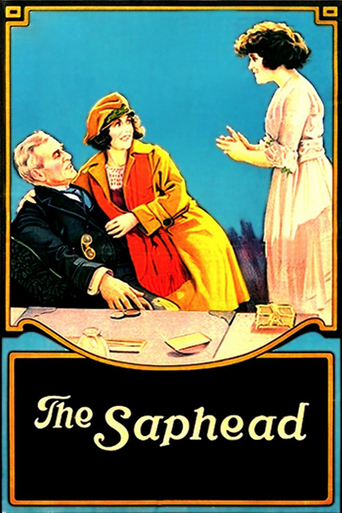JohnHowardReid
Copyright 11 October 1920 by Metro Pictures Corp. U.S. release: 18 October 1920. New York opening at the Capitol: 13 February 1921. 7 reels. 77 minutes. NOTES: Final movie of 19-year-old Beulah Booker (who presumably retired in favor of marriage). A revival of the stage play, "The New Henrietta", opened on Broadway on 22 December 1913. It starred Douglas Fairbanks as Bertie, William H. Crane, Amelia Bingham and Patricia Collinge. In 1915, Fairbanks starred in a considerably modified movie version, The Lamb, for D.W. Griffith. COMMENT: Always a pleasure just to look at, this most beautifully photographed comedy is not your typical Keaton vehicle-and all the better for that innovation. True, he does have some wonderful routines with a roulette table and a corrupt cop, a bungled wedding, and two glorious slapstick highjinks on the floor of the New York Stock Exchange. But his is basically a character role, and his occasional facial expressions are priceless. The support players form an especially fine ensemble. Every role is judiciously cast. Crane, Booker and Cummings are especially adept. The direction is highly polished, the photography superb, the settings most attractive. AVAILABLE on DVD through Kino. Quality rating: 10 out of ten.
bsmith5552
"The Saphead" was Buster Keaton's first feature length film. To me it was a disappointment. At the time Keaton was making short comedies in which his considerable talent was displayed.For this film Keaton was loaned out by Joseph Schenck to Metro Pictures in a role that Douglas Fairbanks had previously played and for which he recommended Keaton for the part. "The Saphead" is more of a drama with comedy sequences far and few between. It should be noted that Keaton did not have control over the production of the picture.The story centers around millionaire Nicholas Van Alstyne (William H. Crane) and his family. Son-in-law Mark Turner (Irving Cummings), who is married to Van Alstyne's daughter Carol (Carol Holloway), is a crooked stock broker who plans to ruin the old man. Van Alstyne's spoiled, shiftless son Bertie (Keaton) is set up to take the blame for Turner's infidelity. Bertie is called a saphead by his father in recognition of his disappointment in him. Turner manages to gain control of the old man's holdings and.......................Keaton's best scene comes when he is thrown out of the stock exchange and performs one of his famous pratfalls. He has few opportunities to display his comedic talents in a mostly dramatic role.This film perhaps foreshadowed Keaton's fate when he moved to MGM in 1928 and lost creative control over his films and quickly lost favor with his fans.
MartinHafer
This is Buster Keaton's first feature-length film. And, oddly, it is not the type project you'd expect this very physical comedian to attempt. It seems that Douglas Fairbanks had done a play on stage and the studios wanted to film it. However, Fairbanks had other commitments and recommended Keaton play his part. Such a role was right up Fairbanks' alley. Despite his reputation today as strictly a swashbuckler, he made some nice comedies in his time, though none of them bore any semblance to Keaton's more acrobatic comedies. And so unfortunately, Keaton looks rather out of place in this film. This isn't to say he's bad, but compared to what you'd expect, his character is amazingly subdued and dull.The story is about a rich family where the father thinks his son, Keaton, is an idiot. Heck, he refers to him as a "saphead", so it's obvious that this severe man isn't father of the year material. As for Keaton, he's a pretty dim bulb and again and again he's a disappointment to his old man. However, late in the film the family's fortune is squandered by the father's beloved son-in-law and only later (and rather by accident), Keaton saves the day.While I was far from thrilled by this low-key comedy (with few laughs), I must say that the print from Kino is excellent--especially given its age. Plus, in addition to seeing this film, they also have packaged two shorts, THE HIGH SIGN and ONE WEEK, on the same DVD.
mccrohan
This movie is a very successful transfer of a hit Broadway play to a feature film. It gives us a chance to step back to the time of 1920 and enjoy the theatrical experience of attending a very popular Broadway play. The actors are splendid . The film is an adaption of the play :The New Henrietta " and it was originally filmed as "The Lamb" starring Douglas Fairbanks and it helped establish him as atop movie star. The print is excellent. I totally enjoyed it as a Silent movie and would very much doubt that it would be improved as a Talkie Enjoy...From personal experience, I have found that I need conditioning for satisfactory enjoyment of Silent films. I usually begin by viewing a short silent comedy such as a Chaplin, etc and thus distance myself from the talkie movie attitude.







